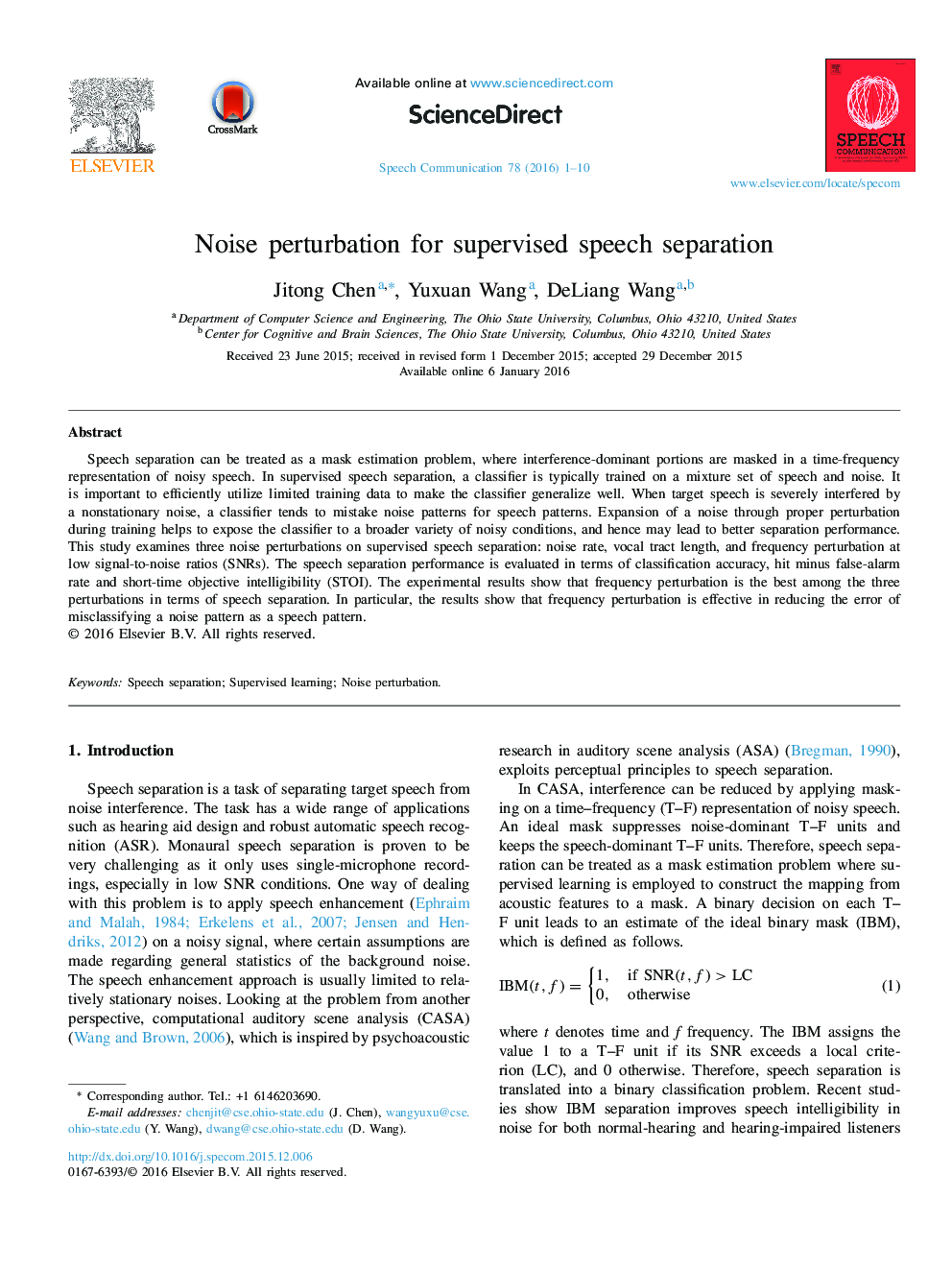| کد مقاله | کد نشریه | سال انتشار | مقاله انگلیسی | نسخه تمام متن |
|---|---|---|---|---|
| 565275 | 1452022 | 2016 | 10 صفحه PDF | دانلود رایگان |
• We have explored noise perturbation methods for improving generalization of supervised speech separation.
• We have evaluated three noise perturbation methods and find that frequency perturbation is the most effective in terms of improved objective speech separation metrics.
• Frequency perturbation mitigates the problem of mistaking noise patterns for speech patterns.
Speech separation can be treated as a mask estimation problem, where interference-dominant portions are masked in a time-frequency representation of noisy speech. In supervised speech separation, a classifier is typically trained on a mixture set of speech and noise. It is important to efficiently utilize limited training data to make the classifier generalize well. When target speech is severely interfered by a nonstationary noise, a classifier tends to mistake noise patterns for speech patterns. Expansion of a noise through proper perturbation during training helps to expose the classifier to a broader variety of noisy conditions, and hence may lead to better separation performance. This study examines three noise perturbations on supervised speech separation: noise rate, vocal tract length, and frequency perturbation at low signal-to-noise ratios (SNRs). The speech separation performance is evaluated in terms of classification accuracy, hit minus false-alarm rate and short-time objective intelligibility (STOI). The experimental results show that frequency perturbation is the best among the three perturbations in terms of speech separation. In particular, the results show that frequency perturbation is effective in reducing the error of misclassifying a noise pattern as a speech pattern.
Journal: Speech Communication - Volume 78, April 2016, Pages 1–10
